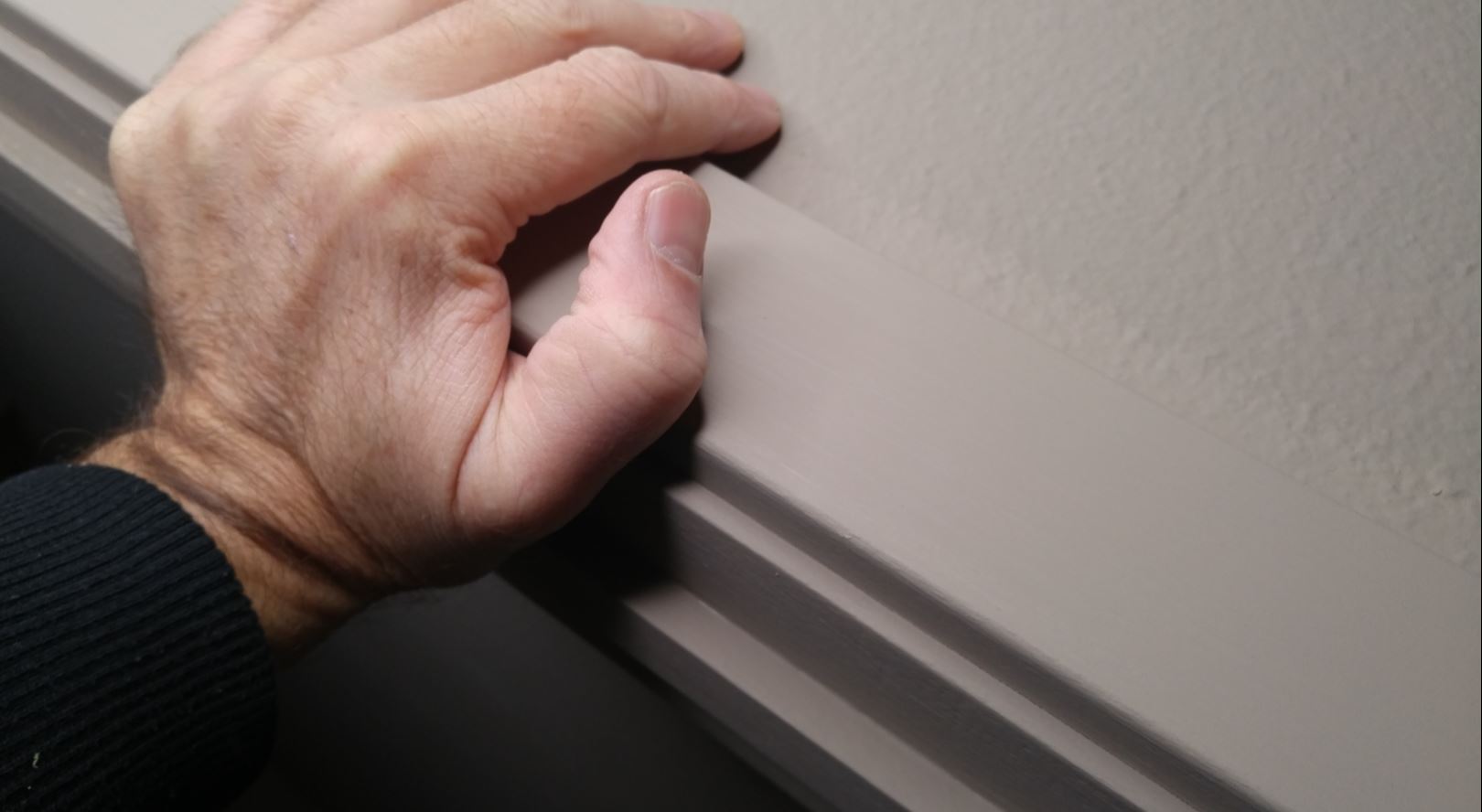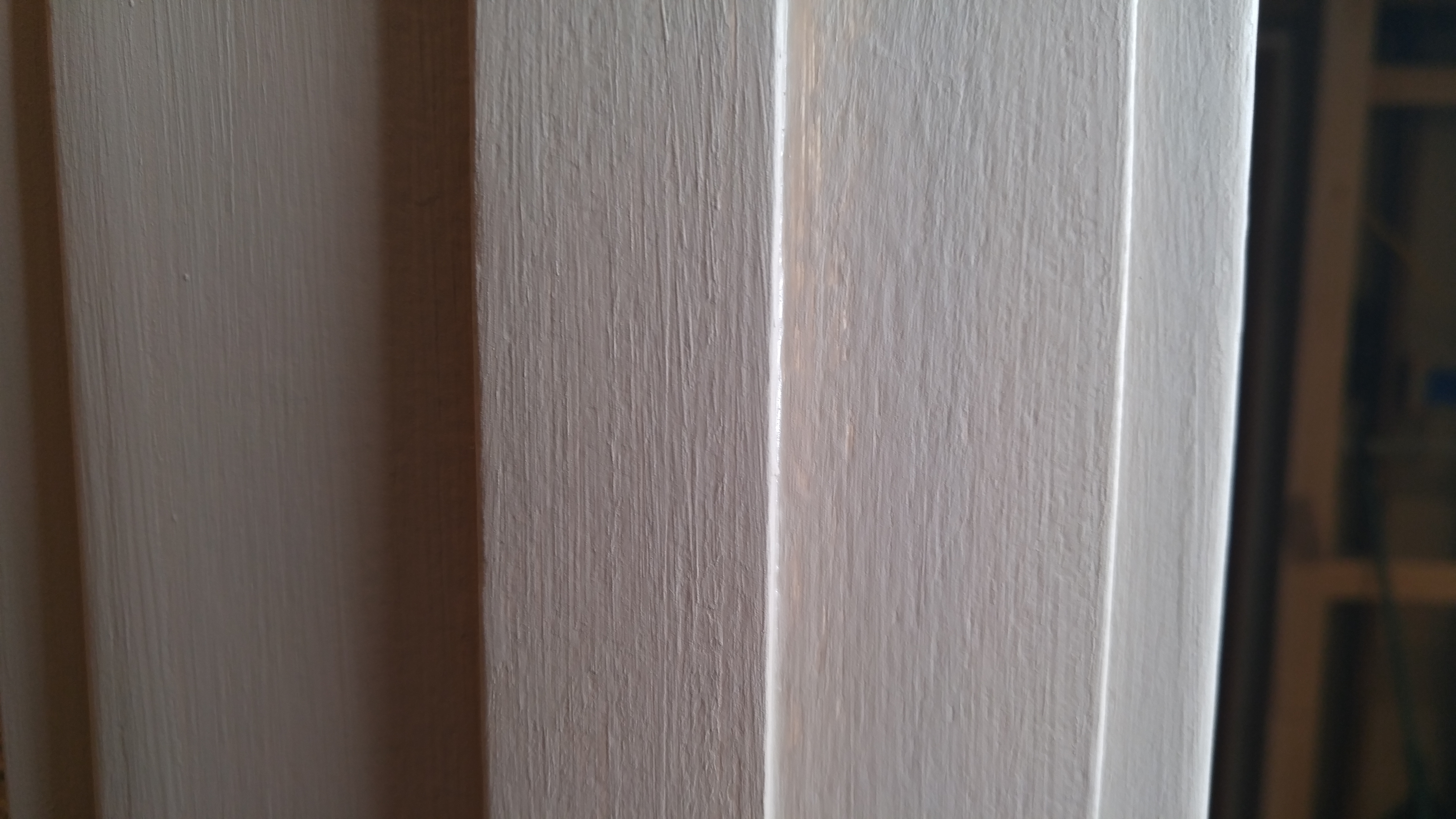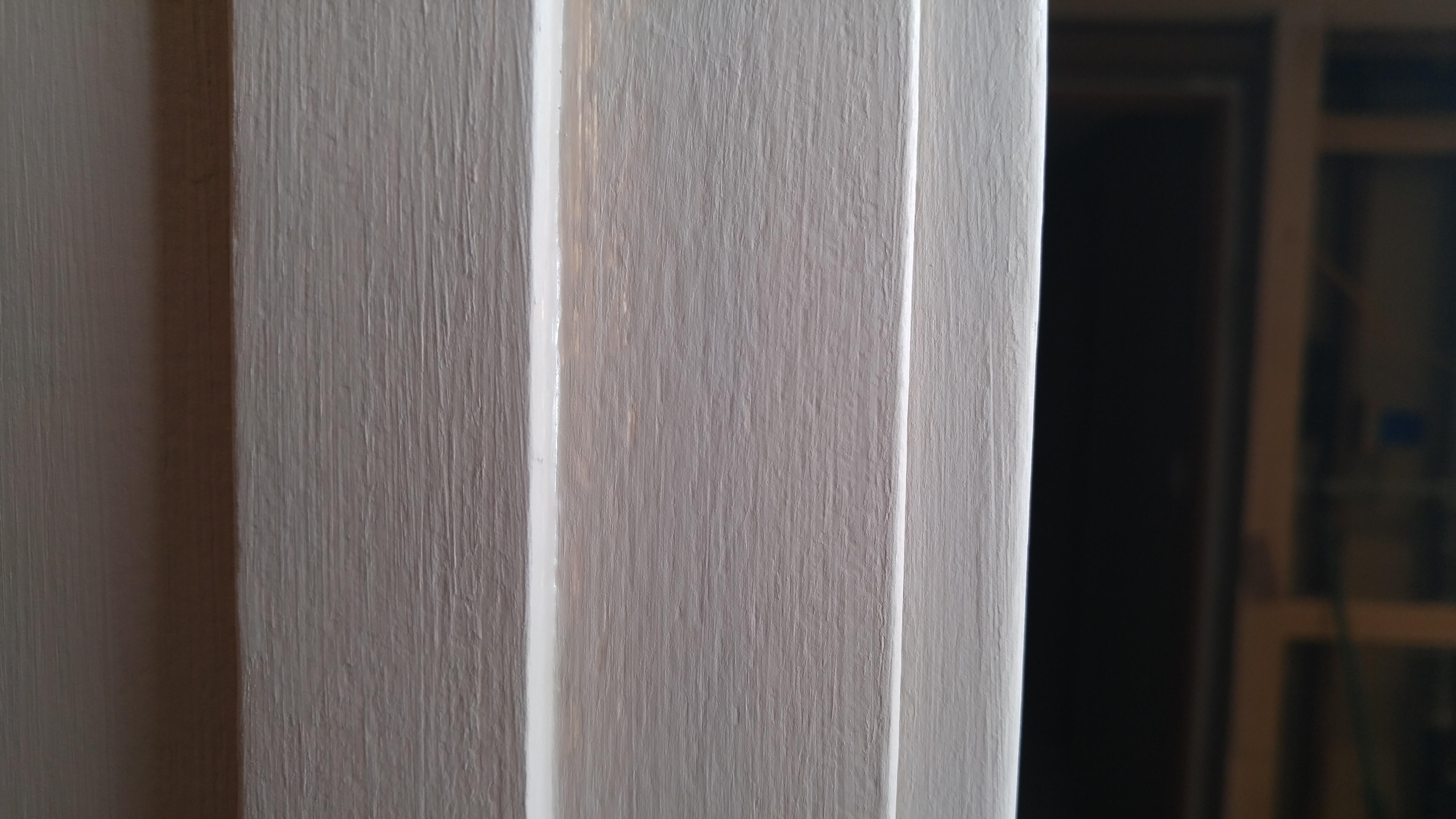Can You Paint Trim in Flat Sheen Paint?

Trim–doors, windows, baseboards, and the like–is usually painted with semi-gloss or glossy paint. Can you paint trim in flat (also known as matte) paint and what would happen if you did?
Best Answer
Yes, you can use flat or matte paint for your trim. It would be vastly more difficult to clean than glossier paints and touch-ups would be frequent.
Details

Close on the heels of that brief answer is this: understand that flat paint will be more difficult to maintain on impact trim surfaces than paint with a gloss. Most trim is a functional thing. It’s there for two reasons: to cover up unfinished edges and to provide a surface that can withstand impact better than drywall can.
The only trim that does not do this is crown molding. Riding high above your head, this regal strip of wood (or PVC) never gets touched. In fact, since it is angled downward, it barely even gets dusty. But crown is a rarity in the world of trim.
Ease of Cleaning: Flat-painted surfaces are hard to clean. Whether you are using a cloth rag, terrycloth towel, sponge, or paper towel, all of them drag on flat-painted surfaces. The stain itself tends to “grab” tighter to flat surface more than to glossier surfaces.
Frequent Touching Up
I often say that the best way to clean flat paint is with a can of flat paint. Having a spare can of matching paint is required when you have flat walls and certainly when you have flat trim. Touch-ups will be frequent.
But you can ease the burden of touch ups by:
- Keeping the paint can half-full. This makes it ease to shake up the can. Full cans are impossible to manually shake.
- Having a trim brush and brush comb nearby. Keep the implements under a counter, in a closet, or some other available place.
Impact Resistance:
Qualifiers

Using flat/matte paint for trim should never be your first choice. Your go-to will always be a paint with some type of gloss. The more gloss, the better–at least from the standpoint of impact resistance and ease of cleaning. If you can stand it and the design conditions call for it, high gloss paint would be the best.
You need to have a reason for using flat for trim. I painted the trim in a section of my basement home movie theater in flat paint because I wanted to reduce light bounce with my video projector. Projectors, ranging from 1,500 to 6,000 lumens, cast brilliant light on the screen. Not all of the light stays on the screen. Because it ricochets off, all immediately surrounding surfaces–ceiling, walls, floor, and even trim–need to be as dark and flat as possible. That is the reason behind black draperies in some movie theaters.
How It Looks
Trim painted flat has an unusual appearance, if only because our eyes are accustomed to seeing shiny trim. It adopts a look similar to that of the adjoining wall. It does not completely disappear because of the shadows created by its offset from the wall and offset within itself, as seen below, where door casing, door stop, and trim all come together to form one unit. Also, if your walls are textured, your trim will not be textured. This is another way the two surfaces will differ in appearance.



Sources
A continuing education supplement from the American Institute of Architects called “The Ingredients of Paint and Their Impact on Pant Properties” has a good, in-depth discussion of how the various elements of paint work together to form a single protective surface.